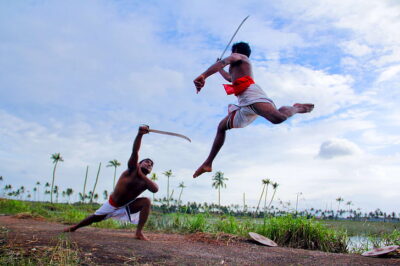Martial arts, with their rich history and diverse techniques, have captivated practitioners and spectators alike for centuries. From ancient origins to modern interpretations, martial arts encompass a wide array of styles, each with its own unique philosophy and approach to combat. In this blog, we’ll take a journey through some of the most prominent martial arts disciplines, highlighting their key characteristics and contributions to the world of self-defense, physical fitness, and cultural heritage.
Karate: Originating from Okinawa, Japan, Karate is perhaps one of the most well-known martial arts worldwide. Characterized by powerful strikes, kicks, and blocks, Karate emphasizes discipline, focus, and technique. Its popularity has led to numerous variations and schools, each emphasizing different aspects of the art, such as Shotokan, Goju-Ryu, and Kyokushin.
Taekwondo: Hailing from Korea, Taekwondo is renowned for its dynamic kicking techniques and emphasis on agility and speed. Developed during the mid-20th century, Taekwondo has evolved into an Olympic sport, showcasing its combination of athleticism and precision.
Judo: Created in Japan by Jigoro Kano in the late 19th century, Judo focuses on throws, joint locks, and grappling techniques. Unlike many other martial arts, Judo places a strong emphasis on the concept of “maximum efficiency, minimum effort,” allowing practitioners to overcome larger opponents through leverage and technique.
Brazilian Jiu-Jitsu (BJJ): Rooted in Japanese Jiu-Jitsu, BJJ gained prominence in Brazil through the Gracie family. It emphasizes ground fighting and submission holds, enabling smaller individuals to defend themselves against larger opponents by utilizing technique and leverage.
Muay Thai: Often referred to as the “Art of Eight Limbs,” Muay Thai originated in Thailand and is known for its extensive use of elbows, knees, shins, and fists. Renowned for its effectiveness in close combat, Muay Thai practitioners develop strength, conditioning, and formidable striking skills.
Kung Fu: With its origins in ancient China, Kung Fu encompasses a vast array of fighting styles, each with its own unique techniques and philosophies. From the fluid movements of Tai Chi to the powerful strikes of Shaolin Kung Fu, this diverse martial art emphasizes physical prowess, mental discipline, and spiritual growth.
Krav Maga: Developed by the Israeli military, Krav Maga is a practical and no-nonsense self-defense system designed for real-world situations. It combines techniques from various martial arts, including boxing, Muay Thai, Judo, and Jiu-Jitsu, focusing on neutralizing threats quickly and efficiently.
Capoeira: Originating in Brazil during the time of slavery, Capoeira is a unique blend of martial arts, dance, and music. Characterized by its fluid, acrobatic movements and rhythmic music, Capoeira serves both as a form of self-expression and a means of self-defense.
Aikido: Founded by Morihei Ueshiba in Japan, Aikido is a martial art that emphasizes harmonizing with the energy of an opponent and redirecting it rather than confronting it head-on. Through circular movements and joint locks, Aikido practitioners seek to neutralize aggression while minimizing harm to both parties.
Wing Chun: Originating from southern China, Wing Chun is a close-range martial art known for its efficiency and directness. Focusing on simultaneous attack and defense, Wing Chun techniques are designed to overwhelm opponents with rapid strikes and fluid footwork.
In India, martial arts have a rich history deeply intertwined with the country’s cultural heritage and traditions. While there are numerous traditional combat systems practiced in different regions of India, one of the most popular and widely recognized forms of martial arts is Kalaripayattu.
Kalaripayattu: Often hailed as one of the oldest martial arts in the world, Kalaripayattu traces its origins to ancient Kerala, in South India. The name “Kalaripayattu” is derived from two Malayalam words: “kalari,” which means battlefield or combat arena, and “payattu,” which means practice. This ancient martial art is believed to have been developed by the warriors of Kerala for self-defense and combat purposes.
Kalaripayattu is a comprehensive system that includes striking techniques, kicks, grappling, joint locks, and weaponry. It also incorporates elements of yoga, meditation, and Ayurveda (traditional Indian medicine) to develop both physical prowess and mental discipline. Training in Kalaripayattu typically takes place in a dedicated training space called a “kalari,” where students learn under the guidance of a master or guru.
The practice of Kalaripayattu is not only about combat skills but also emphasizes personal growth and spiritual development. It fosters qualities such as discipline, focus, agility, and strength, making it a holistic form of martial arts that benefits both the body and the mind.
In addition to Kalaripayattu, there are other regional martial arts practiced in India, each with its own unique techniques and cultural significance. Some of these include:
Silambam: Originating from Tamil Nadu, Silambam is a traditional Indian martial art that focuses on fighting with a long bamboo staff called a “silambam.” It also includes hand-to-hand combat techniques and is often accompanied by rhythmic music.
Thang-Ta: Hailing from the northeastern states of Manipur and Assam, Thang-Ta is a martial art that combines armed combat with empty-handed techniques. Practitioners use swords, spears, and shields in choreographed routines and sparring sessions.
Gatka: Associated with the Sikh community, Gatka is a martial art that originated in Punjab. It involves the use of wooden sticks and swords, as well as hand-to-hand combat techniques. Gatka is not just a form of self-defense but also holds cultural and religious significance for Sikhs.
Mallakhamb: Mallakhamb is a traditional Indian sport that combines elements of gymnastics, yoga, and wrestling. It involves performing various acrobatic and balancing exercises on a vertical wooden pole or a hanging rope.
These are just a few examples of the diverse martial arts practiced in India, each reflecting the country’s rich cultural tapestry and heritage. Whether it’s the dynamic movements of Kalaripayattu, the rhythmic grace of Silambam, or the spiritual depth of Gatka, Indian martial arts offer a fascinating glimpse into the country’s ancient traditions and philosophy.

